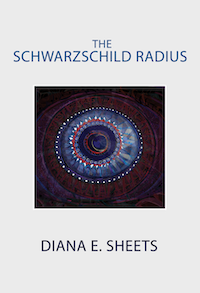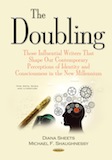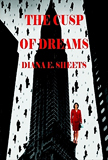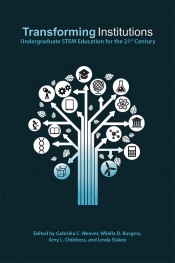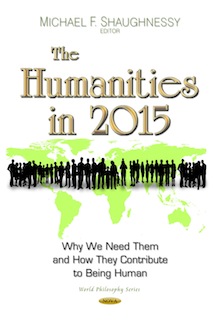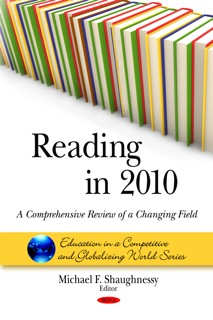Twilight, Harry Potter, and the Youthful Reader: Morality, Gender, and $$$s in Today's Fantasy Blockbusters
Copyright © 2011 by Diana E. Sheets
Harry Potter has set the gold standard for blockbuster sales of young adult novels. Since the release of Harry Potter and the Philosopher’s Stone in 1997, known in America as Harry Potter and the Sorcerer’s Stone, the seven-book series has sold more than 450 million hardcover and paperback books (“Harry Potter series to be sold as e-books,”
Twilight is the first young adult book series in America to mimic the phenomenal success of Harry Potter (Amy M. Clarke, “Introduction: Approaching Twilight,” The Twilight Mystique: Critical Essays on the Novels and Films, Eds. Amy M. Clarke & Marijane Osborn, Critical Explorations in Science Fiction and Fantasy, 25, Series Eds. Donald E. Palumbo and C. W. Sullivan III, McFarland & Company, Inc., Publishers, 2010, 3). Stephenie Meyer’s four-book vampire-romance saga debuted in 2005 when it was named by Amazon.com as the “Best Book of the Decade . . . So Far” and a Publishers Weekly “Best Book of the Year” (Stephenie Meyer website, http://www.stepheniemeyer.com/bio.html).
In 2008 it was the top selling book in
Blockbuster book sales drive demand for a film franchise, which in turn increases book readership. As of August 7, 2011, the first Twilight film exceeded $392 million in global revenue (Box Office Mojo, http://www.boxofficemojo.com/movies/?id=twilight08.htm) while
Today the critical reception of a book is primed by the publisher’s expectation of its financial success. Certainly
That is not to say that the Harry Potter is without its critics. Anthony Holden, one of the Whitbread judges, aired his grievances when he suggested it would have been a “national humiliation” if J. K. Rowling’s Harry Potter and the Prisoner of Azkaban had received the 2000 award in lieu of Seamus Heaney’s translation of Beowulf, which won by only a narrow a 5 to 4 margin (Giles Elgood, “Harry Potter in Literary Flap,” Reuters, January 26, 2000, http://theliterarylink.com/potter.html). As Holden noted in The Observer, “Harry Potter and the Doom Spell Tournament is less a book than a phenomenon. A marketing phenomenon. Haven’t Bloomsbury sold enough copies of J.K. Rowlings’s three volumes so far without resorting to advance hype worthy of a Wonderbra? Have they no faith in their product’s ability to sell on its merits?” (“Why Harry Potter doesn’t cast a spell over me,” The Observer, Review Section,
Nor was Holden alone in his withering criticism. A. S. Byatt, opining in The New York Times, suggested that Rowlings series “is written for people whose imaginative lives are confined to TV cartoons, and the exaggerated (more exciting, not threatening) mirror-worlds of soaps, reality TV and celebrity gossip. Its values, and everything in it, are, as Gatsby said of his own world when the light had gone out of his dream, ‘only personal.’ Nobody is trying to save or destroy anything beyond Harry Potter and his friends and family” (“Harry Potter and the Childish Adult,”
Harold Bloom concurred, noting that when he read Harry Potter and the Sorcerer’s Stone he found it insufferable. “The writing was dreadful; the book was terrible. . . . Rowling’s mind is so governed by clichés and dead metaphors that she has no other style of writing.” He derisively surmised that Stephen King’s exaltation of the Harry Potter series was nothing less than a narcissistic affirmation of his own fiction since by King’s reasoning—paraphrased by Bloom—“If these kids are reading Harry Potter at 11 or 12, then when they get older they will go on to read Stephen King” (“For the World of Letters, It’s a Horror: Giving a National Book Foundation award to Stephen King is only the latest chapter in the dumbing down of our culture,” Commentary, Los Angeles Times, September 19, 2003, http://articles.latimes.com/2003/sep/19/opinion/oe-bloom19).
The critical response to Twilight mirrored that of Harry Potter, although on a smaller scale. Publishers Weekly gave it a starred review, suggesting that it was “Propelled by suspense and romance in equal parts [this story] will keep readers madly flipping the pages of Meyer’s tantalizing debut” (http://www.stepheniemeyer.com/bio.html). “Her story,” The Times suggested, “recounted in hypnotic, dreamy prose, encapsulates perfectly the teenage feeling of sexual tension and alienation (Amanda Craig, “New-Age vampires stake their claim,”
Brian MacArthur, writing for The Telegraph, selected “100 books that defined the noughties,” placed Harry Potter and the Deathly Hallows at the top of his list, well above the books of many celebrated literary authors, while noting “Rowling is never less than absorbing. Some may sneer at her books, but they are triumphant sagas about the defeat of evil that tap into our basic hunger for stories.” By contrast, MacArthur ranked Twilight only 32nd and derisively castigated Meyer’s stylistic and narrative endeavors, “Astonishing, mainly for the ineptitude of her prose. Teen vampire schlock that has the nation’s youth in thrall” (
Both collections are escapist fantasies in an age when increasingly activities for children are prearranged, structured, and supervised while their economic and social prospects as young adults are diminishing. If the real world seems too dismal, to drab, to dull, and too “dead,” virtual reality as imagined in a fictive universe provides the tantalizing possibility of empowerment, free choice, and opportunity—whether as a fabulist adventure story, the Harry Potter saga, or a blood-sucking romance, the Twilight series, that offers the tantalizing prospect of becoming “undead.”
What, then, distinguishes Twilight from Harry Potter? Certainly, J. K. Rowling has chosen her protagonist with the expectation that boys, as well as girls and women readers, would be compelled to read Harry Potter’s “heroic” journey toward manhood. Stephenie Meyer, by contrast, has written a coming of age story—Bildungsroman—that features a seventeen-year-old high school girl pursuing her desire for romance and eternal commitment with a vampire. The male characters in the Twilight saga are ancillary to the female protagonist’s longings. Their presence accentuates the importance of our heroine Bella Swan—all those suitors!—and her transformation, metaphorically speaking, from an ungainly duckling into a beautiful (Bella) if “vamperific” swan. Despite this passion, the estrogenated vat of longing that suffuses this story, there is no escaping the realization that this “mad” love is a relationship that is not only fraught with risk, but, ultimately, self-annihilating.
For all but the most feminized boys, the Twilight saga will not engage their hearts and minds. But its phenomenal success is all the more striking for its calculated decision to forsake half the young adult audience in order to present the fevered consciousness of one hormonal young woman. Our heroine, Bella Swan, lusts for a princely suitor who is a “vegetarian” vampire of Byronic sensibility who, nonetheless, denies his primal impulses to feast on human blood. The noble attributes of Edward Cullen accentuate the desirability of Bella Swan who by the fourth novel, Breaking Dawn, has been transformed from a clumsy mortal—symbolized on the book’s cover as a mere pawn—into a beautiful and majestic vampire Queen, the most powerful player on the chessboard. Bella’s metamorphosis is in no small measure attained through love, marriage, the birth of her half-vampire and half-mortal daughter, and, ultimately, our heroine’s transformation into a vampire.
As anyone familiar with reading studies knows, young men in
While Harry Potter and Twilight might seem at first glance to be gender differentiated stories—a boy’s fabulist adventure story versus a girl’s vampire-romance—their differences are not as pronounced as first appears. The quest undertaken by Harry Potter, A. S. Byatt suggests, is only personal since “Nobody is trying to save or destroy anything beyond Harry Potter and his friends and family” (“Harry Potter and the Childish Adult,” The New York Times, Opinion, July 7, 2003, http://www.nytimes.com/2003/07/07/opinion/harry-potter-and-the-childish-adult.html).
Thus, Harry Potter’s quest may be seen as a feminized endeavor—an effort to save those closest and dearest to him from personal harm. It would not, for example, be depicted as a manly goal—saving the world from annihilation, a mission that is both abstract and depersonalized and, therefore, characteristic of superheroes in comic books targeted for adolescent boys (“Watchmen, Superhero Comics, and the Loss of Consciousness,” May 17, 2009, http://www.literarygulag.com/blog/show/52). Indeed, as Ron Charles, fiction critic for The Washington Post, argued, the large number of adults reading the Potter series suggests a “bad case of cultural infantilism” and Rowling’s “little world of good vs. evil” was not only simplistic but “childish” (“Harry Potter and the Death of Reading” The Washington Post, 15 July 2007, http://www.washingtonpost.com/wp-dyn/content/article/2007/07/13/AR2007071301730_pf.html). Nor is this surprising since the feminization of literary fiction has been a pronounced trend since at least the 1980s and nowhere is the trend more apparent than in Young Adult fiction (“The ‘Pink and White Tyranny’” August 5, 2007, http://www.literarygulag.com/blog/show/5; “Literary Fiction and ‘Adam’s Curse,’” September 13, 2007, http://www.literarygulag.com/blog/show/6; “Virtue” December 12, 2007, http://www.literarygulag.com/blog/show/11).
Both Rowling and Meyer are at pains to suggest the literary antecedents to their stories. For Rowling that includes, among others, Chaucer, Shakespeare, Austen, and Brontë (Fidelia, “Chaucer, J.K. Rowling, and All of Us: A Journey from Harry Potter to The Canterbury Tales . . . and Back Again,” The Leaky Cauldron, Issue 24, May 2008, http://www.the-leaky-cauldron.org/features/essays/issue24/Chaucer; Melissa Anelli & Emerson Spartz, Mugglenet and The Leaky Cauldron interview Joanne Kathleen Rowling, Part Three,” July 16, 2005, http://www.mugglenet.com/jkrinterview3.shtml; J. K. Rowling, “From Mr. Darcy to Harry Potter by way of Lolita,” Sunday Herald, May 21, 2000, http://findarticles.com/p/articles/mi_qn4156/is_20000521/ai_n13949408/; Charlotte Higgins, “From Beatrix Potter to Ulysses . . . what the top writers say every child should read,” The Guardian, Section: Home, 3). Meyer’s cites several of her influences directly in the Twilight saga and these include, among others, the Bible (Old Testament, Genesis
Nevertheless, it would appear that Rowling was more directly influenced by recent English Young adult literature, C. S. Lewis’s The Chronicles of Naria (Jennie Renton, “The Story Behind the Potter Legend: JK Rowling Talks About How She Created the Harry Potter Books and the Magic of Harry Potter’s World,” The Sydney Morning Herald, October 28, 2001, http://home.arcor.de/antje_lang/Archiv_28.10.01-The_Story_behind_the_legend.htm), J. R. R. Tolkien’s The Lord of the Rings (John Granger, “Tolkien and Rowling: A Case for ‘Text Only,’” October 9, 2008, http://www.hogwartsprofessor.com/tolkien-and-rowling-a-case-for-text-only/), and Roald Dahl’s James and the Giant Peach (John Shirley, Review: “Harry Potter and the Sorcerer’s Stone,” November 19, 2001, LOCUSonline, http://www.locusmag.com/2001/Reviews/Shirley_HarryPotter.html), in addition to the British boarding school tales first pioneered by Thomas Hughes in Tom Brown’s Schooldays (Ian Wylie, “Stephen Fry’s Schooldays,” Manchester Evening News online, December 7, 2004. Accessed
Meyer, by contrast, sought to captivate
If Rowling’s Harry Potter draws mightily from the staple of English young adult classics, Meyer’s Twilight has as its foundational influence her Mormon beliefs. For this reason Twilight is best understood as a faith-based Mormon Bildungsroman cleverly packed for a mostly secular female audience seeking titillation and fantasy.
How might a devout young Mormon woman who believes in chastity, marriage, family, and the sanctity of her faith convey the excitement of her passion, beliefs, and moral worldview to a non-Mormon audience so that her story seems exciting and “fresh”? Meyer’s success depends on transposing the story into a different genre—fantasy—so that it becomes palpable to a secular and spiritually diverse group of readers.
THE PLOT FOR TWILIGHT
Bella Swan comes from a broken, non-believing, family. Her mother, Renée, is a countercultural, live-for-the-moment “hippie,” who has remarried and is traveling on the road with her new husband, Phil, who’s a minor-league ballplayer. Bella, feeling very much the third wheel in their new relationship, leaves
Charlie, who is a lapsed Lutheran, is the town’s police chief. He is taciturn, but caring. He attempts, unsuccessfully, to create a patriarchal household that will protect Bella. But given his late hours, his years as an absentee father, and his decision to give Bella a used truck, he fails. Meanwhile, Renée has all but abdicated her responsibility for her daughter. At the high school Bella meets heartthrob Edward Cullen. He’s tall, slim, and brooding with a ghostly pale complexion. Bella is smitten. Later, she discovers that Edward and his family are among a select group of “vegetarian” vampires who resist the urge to drink human blood. He practices abstinence, refusing not only to drink her blood but also to make love to her. Edward’s nobility is demonstrated through his refusal to succumb to these temptations, despite Bella’s interest in becoming a vampire and her willingness to engage in sexual intimacy with him. Thus, Edward, the morally upstanding vampire, exhibits the moral conscience of a Victorian gentleman. His strength of character—all manifestly demonstrated through abstinence—is a demonstration to Bella of his love and devotion.
The Cullen family are attractive, sophisticated, and wealthy, although the material trappings of wealth mean little to them. For Bella, they represent the ideal American family: nurturing, supportive, close, and committed to making a better world. Despite the temptation and risk of having Bella amongst them, they quickly rally to support Edward and Bella’s decision to be together and they unite to protect her from blood-thirsty vampires. Not surprisingly, Bella longs to become a vampire, although Edward resists since she would have to die.
Then, there’s Jacob Black, a Native-American of modest means who belongs to the Quileute tribe who are “shape-shifters,” able to transform themselves into werewolves that travel in packs. Jacob is dark-skinned. His father is disabled. As Jacob matures he is everything Edward is not. Jacob is strong; Edward is quick. Jacob is big and muscular; Edward is slim and effete. Jacob is manly; Edward is feminine in his ghostly pallor. If we accept that many adolescent girls are attracted to young men who they feel resemble themselves more than their fathers, this might explain why Bella is more attracted to Edward than to Jacob. Bella describes him as “sort of beautiful” (New Moon, Little, Brown and Company, 2006, 192). But the beastly werewolf is no competition for his rival, the vampire. Nevertheless, by the story’s conclusion, Meyer has Jacob “imprint” on Edward and Bella’s daughter, Renesmee, and readers are led to speculate that he may one day marry her.
How to write a story about the virtue of chastity, the dream of ever-lasting love, and the importance of marriage and family while suffusing the tale with latent religiosity? How might the “whiteness” of the Mormon faith, which between 1849 and 1978 prohibited the ordination to the priesthood black men of African decent, be reconciled with our current multiculturalism?
Meyer’s sensibilities are embedded into the Twilight saga. As Sarah Schwartzman noted, Meyer’s membership in the Church of Jesus Christ of Latter-day Saints (LDS) is mentioned by her in nearly every interview (“Is Twilight Mormon?”, The Twilight Mystique: Critical Essays on the Novels and Films, Edited by Amy M. Clarke and Marijane Osborn, Critical Explorations in Science Fiction and Fantasy, 25, Donald E. Palumbo and C.W. Sullivan III, series editors, McFarland & Company, Inc., 2010, 121-136, citing 121). Meyer admits that Mormons are perceived as different while wondering why her faith retains people’s interest, “It seems funny that [my Mormon faith] is still a story . . . . I guess being a Mormon is just odd enough that people think it’s a real story (Schwartzman, 121, citing Carol Memmott, “’Twilight’ author Stephenie Meyer unfazed as fame dawns,” USA Today,
Yet it is this perception of Mormon “otherness” that Meyer has incorporated so effectively as a virtue in the Twilight saga. The “vegetarian” vampires, as personified by the Cullen family, have become “the elect.” In Twilight the vampire as “other” is embodied in Edward, a Byronic, if chaste, hero. His ability to abstain builds tension as readers long for the culmination of this dangerous and illicit passion between two fated lovers, the realization of which may prove fatal. Meyer evokes the transgressive quality of this tale to titillate her young, female audience who are enraptured with the prospect of Gothic romance and forbidden love between an innocent young woman and the alluring, if potentially dangerous, vampire and werewolf suitors. But beneath the Gothic trappings is an American high school romance in which Juliet meets Romeo, they fall in love, marry, and she gives birth to his child while becoming gloriously undead. Thus, not only has tragedy been averted, death has been subverted. Twilight is a story in which free will, determination, and fabulation triumph over disturbing reality, namely, the crisis of the family and the diminished possibility of the bonds of love and commitment in our contemporary American society.
That Meyer never really convinces us that Jacob Black, the Native American boy next door who becomes a beast of a man-wolf, will successfully win Bella’s heart might be assessed in light of the troubled history of the Mormon faith in its historic treatment of its African and African-American members (Black and Mormon, Eds. Newell G. Bringhurst and Darron T. Smith, University of Illinois Press, 2004). Certainly, Natalie Wilson has written an essay, sectioned into five parts and posted on the web, which seeks to establish Twilight within the current context of “Whiteness Theory” (“Got Vampire Privilege?: The Whiteness of Twilight,” http://seducedbytwilight.wordpress.com/2010/04/06/got-vampire-privilege-the-whiteness-of-twilight).
As with so many proponents of “Whiteness Theory,”
Of all the so-called scholarly books published about Twilight, The Twilight Mystique: Critical Essays on the Novels and Films offers the best analysis thus far. The roots of nineteenth century temperance and its ties to LDS is explored by Ann V. Bliss. Abstinence among the Cullen family conveys “the kind of power that could potentially disrupt the vampire world and supplant the evil ruling Volturi” who not only drink human blood but appear to take pleasure in inflicting pain. (“Abstinence, American-Style,” The Twilight Mystique, 107-120, citing 116). Sarah Schwartzman’s essay, “Is Twilight Mormon?” explores how Meyer’s Mormonism is imbedded in the Twilight saga, particularly the Mormon concept of “free agency and sacrifice” implicit in Mormon beliefs that life is a test of one’s faith and presents the opportunity of potentially achieving “Godhood” (“Is Twilight Mormon?” The Twilight Mystique, 121-136, 124).
To underscore that biblical connection, Twilight’s book cover features two hands cupping an apple and the novel begins with a quote from Genesis 2:17 that precedes the opening Preface. “But of the tree of the knowledge of good and evil, thou shalt not eat of it: for in the day that thou eatest thereof thou shall surely die.” But as Susan Jeffers elucidates, for Mormons Adam and Eve’s fall is not a cause for woe. Rather, it begins the human story, of individuals opting through conscious moral reasoning to choose good over evil. This, in turn, confers the possibility of moral and social development that offers the opportunity not only for atonement but also redemption. Eve’s decision to eat the apple and persuade Adam to do the same lies at the heart of the Mormon belief that the fall, moral agency, and afterlife provide the pathway to salvation. Bella’s choices mimic those of Eve. From the Mormon theological perspective, therefore, the very act of deciding to become a vampire may be interpreted less as a fall from grace than as a necessary first step in the exercise of free will that offers the potential for wisdom and the possibility of redemption. This process parallels the Christian fall, the choice to embrace the beliefs of Jesus Christ, and the prospect not only for salvation but for immortality (“Bella and the Choice Made in
For Bella, the transformation from mortal to vampire confers moral responsibilities: the care for her daughter and husband, the participating in an extended network of “vegetarian” vampires who now constitute her extended family, as well as the need to exercise enormous self control as she resists her impulses as a “new born” vampire to quench her thirst by drinking human blood—itself a metaphor for the importance of sexual fidelity within her marriage and a denial of temptations, sexual and otherwise. The decision by “vegetarian” vampires to live among humans and not drink their blood suggests their inherent superiority. Their self-control becomes not only an exercise of power, but also an indication that they are more enlightened, more divine (Bliss, 111-117).
Indeed belief lies at the heart of the Twilight saga (Schwartzman, 121 & Jeffers, 137). In volume II, New Moon, Bella describes her agnostic perspective, which parallels that of her parents.
My own life was fairly devoid of belief. Charlie considered himself a Lutheran, because that’s what his parents had been, but Sundays he worshipped by the river with a fishing pole in his hand. Renée tried out a church now and then, but, much like her brief affairs with tennis, pottery, yoga, and French classes, she moved on by the time I was aware of her newest fad (New Moon, 36).
Bella is attracted not only to Edward but also to his family because of their beauty—that ghostly pale splendor—their exalted status as outsiders and moral guardians, as well as their dignity and grace. Their affluence confers upon them a sanctity and nobility she yearns to possess. Of course, as Edward acknowledges, vampires, even “vegetarians” ones, have no potential to achieve Christian salvation. After all, they are not mortal. Nevertheless,
But for Stephenie Meyer, it would seem salvation for “vegetarian” vampires is possible. For they would appear to be the spiritual exemplars in the Twilight saga of the Mormon faithful. As such they are outsiders whose beliefs lie beyond the pale. Nevertheless, this confers upon them an exalted status as they strive mightily to live exemplary lives, embracing free will, resisting temptation, and upholding righteous morals—qualities that, undoubtedly, enhance their prospects for redemption.
Bella rejects Jacob Black—a poor, dark skinned Native American—as a suitor, although he is portrayed sympathetically. Edward’s transformation into a vampire is ethereal, positively magisterial, with a diamond-cluster sheen illuminating the surface of his skin. By contrast, Jacob Black’s shape-shifting transfiguration into a werewolf represents a devolutionary regression to primal beast. If Edward is feminized—slim, pale, ethereal—Jacob is brutishly manly—tall, muscular, and intimidating—and these distinctions favor Edward since his appearance is more likely to appeal to adolescent girls who prefer boy-men rather than those hairy hulks who bear an uncanny resemblance to their fathers.
CONCLUSION:
In the era when fiction must be positioned as a mass market commodity or it won’t be published at all, the Twilight saga is a phenomenal success. It delivers for its intended market—young girls and women yearning for the forbidden passion of a transgressive romance within the fabulistic framework of a Gothic tale. The Twilight saga is neither accomplished in literary style or plot. Its references are founded on pop culture—Buffy the Vampire Slayer and Angel—rather than Macbeth. In the age of the scarcely literate, its aim is perfect and true.
Twilight immerses the reader in the throes of adolescent desire. As is characteristic of Gothic fiction, it upends realism and rejects Enlightenment values (Peter K. Garrett, Gothic Reflections: Narrative Force in Nineteenth-Century Fiction, Cornell University Press, 1). Beneath the surge of raging hormones and high school angst is a story that celebrates outsiders—vampires and werewolves—as the blessed purveyors of a decidedly conservative moral universe where love, family, and spirituality prevail against all odds. That it also happens to be a covert affirmation of the Mormon faith is only fitting given the current acclaim of the musical satire The Book of Mormon and the heightened visibility of former Massachusetts Governor Mitt Romney, a practicing Mormon, who aspires to be the 2012 Republican candidate for President.
In today’s market-driven publishing conglomerates, the quality of the fiction, its so-called “literary chops,” count for nothing. Indeed, the clunky prose and fabulistic plots of Harry Potter and Twilight are conceived for a “dumbed down” feminized and child-centric reader whose prosaic tastes and circumscribed literacy become a cause for celebration rather than censor. Both novels are a flight from reality. Both celebrate infantile dreams of empowerment in a world where children face daunting challenges. No matter. Today, after all, a novel is really only a staging ground for its film sequels and merchandising ties-ins. Therein lies the source for the enormous appeal of both Harry Potter and Twilight.
In a more perfect universe, Harry Potter series and Twilight saga would not hold the keys to the kingdom of adolescent fiction. Fiction would demand more from its youthful readers, and they would willingly and wistfully rise to the challenge. Alas, this is not our world. Harry Potter and Twilight and their ilk are the stories celebrated today by publishers, reviewers, and readers. No surprise, but scarcely a cause for celebration.


